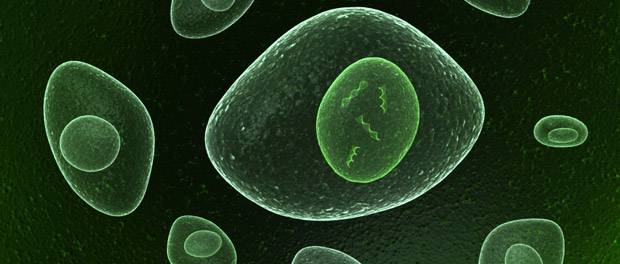
A study led by a team of researchers at the Faculty of Medicine & Dentistry at the University of Alberta sheds light on a new, interesting way metabolism is connected to DNA regulation. The discovery may add an important piece to the puzzle in scientists’ quest to understand diseases and their epigenetic basis. One such disease commonly focused on is cancer.
Inside the cell’s nucleus, DNA tightly winds itself around histones, a specialized type of protein responsible for the formation of chromatin. Typically, histones package the DNA so tightly that gene expression and DNA replication – processes necessary for division and cell growth – cannot occur. With histone modification, however, the addition of an acetyl-group can loosen the DNA, allowing for these necessary functions to occur. Some different histone modifications include acetylation, phosphorylation, methylation, ADP ribosylation, and ubiquitination.
When acetyl coenzyme A (acetyl-CoA) sacrifices an acetyl-group, the DNA relaxes and the expression of genes and DNA replication ensues. The epigenetic regulation of DNA is critical to normal functions and development as well as diseases such as cancer or heart failure. How exactly the nucleus produces acetyl-CoA for histone acetylation has remained elusive until now.

The group of scientists, led by postdoctoral fellow Gopinath Sutendra and Professor Evangelos Michelakis in the Department of Medicine, were surprised when they found an enzyme – Pyruvate Dehydrogenase Complex (PDC) – in the nucleus when it was thought to exist only in the mitochondria. Even more surprisingly, it could make acetyl-CoA. In mitochondria, PDC breaks down sugars we ingest and produces acetyl-CoA for the purpose of energy production. In the nucleus, PDC generates acetyl-CoA to be used for histone acetylation. Depending on the balance of PDC in the mitochondria and nucleus, sugars we consume could be used for energy or they could turn on our genes or activate DNA replication. The research, highlighting a new possible connection between DNA regulation and metabolism, has been published in Cell.
“Although this jumping of an enzyme from one organelle into another in the cell is not unheard of, our results were quite surprising,” Sutendra says. “We wanted to measure acetyl-CoA levels and PDC in the mitochondria because that’s where we thought they were. But accidentally we had the nuclei isolated at the same time and we saw PDC in the nucleus. So we asked, ‘what is PDC doing there?’ And that started it all.”
“We were surprised that, despite the recognized importance of histone acetylation in cell biology and medicine, and despite the efforts by many to develop drugs that regulate histone acetylation, the source of acetyl-CoA in the nucleus had remained unknown,” Michelakis says. “Sometimes the answers to important biological questions are just next to you, waiting to be discovered,” he adds.
After further investigation, the translocation of PDC from the mitochondria to the nucleus may result in faster cancer cell growth. According to the research, “Inhibition of nuclear PDC decreased acetylation of specific lysine residues on histones important for G1-S phase progression and expression of S phase markers.”
The observations gleaned from this study could help inform future strategies for cancer treatments and contribute to the research on epigenetic regulation in connection with physiologic or pathologic conditions. “We are very excited about this new pathway linking energy production (the process known as metabolism) with gene regulation,” the researchers say.
Source: Learn all about it and read more about their findings here: A Nuclear Pyruvate Dehydrogenase Complex Is Important for the Generation of Acetyl-CoA and Histone Acetylation. Gopinath Sutendra, Adam Kinnaird, Peter Dromparis, Roxane Paulin, Trevor H. Stenson, Alois Haromy, Kyoko Hashimoto, Nancy Zhang, Eric Flaim, Evangelos D. Michelakisemail. July 2014.
References: Alberta University. Sweet Genes. July 2014.


